Earlene asked: “How do I remove the white film that comes in flower vases after repeated use? I also get this in my glass coffee pot.”
Nothing is more aggravating than having a special vase ruined because of that white film that builds up from use. This film is caused from minerals in the water and is easy to remove. Most vases do not have sufficient openings for scrubbing this film out by hand, so it requires a cleaner that can get down to the bottom and remove the film on its own. Here are two methods you can use to get your vase looking new again.
is more aggravating than having a special vase ruined because of that white film that builds up from use. This film is caused from minerals in the water and is easy to remove. Most vases do not have sufficient openings for scrubbing this film out by hand, so it requires a cleaner that can get down to the bottom and remove the film on its own. Here are two methods you can use to get your vase looking new again.
Cleaning your Vase with Vinegar
You Will Need:
- White vinegar
- Rice or sand
- Bottle scrubber (available in the baby section at any store)
- Mild soap
- Distilled water
Steps to Remove the Film:
- Start by filling the vase with white vinegar so that it covers the filmed area. If the vase is large, you can use a mixture of vinegar and water.
- Allow the vinegar to set for a couple of hours.
- Swish the vinegar around to see how much of the film has been loosened.
- If the film layer is thick and not coming loose, add a scoopful of rice or sand (be careful with sand as it may scratch the interior of the glass).
- Cover and shake the container. The rice/sand will act as scrubbers to loosen tough layers.
- Use a bottle scrubber to remove any remaining film from the interior of the vase.
- Remove the vinegar and contents from the vase.
- Wash with a mild soap to clean.
- Rinse the vase with distilled water. This is important to ensure that a white film does not get re-deposited onto the vase if you have hard water.
- Dry completely.
Cleaning Your Vase with Denture Tablets
Denture tablets aid in the removal of mineral deposits often found inside of flower vases.
You Will Need:
- Water
- Denture tablets such as Polident
- Mild soap
Steps to Clean the Vase:
- Start by filling the vase with water.
- Drop in a denture tablet. Use two tablets for larger vases.
- Allow it to set and work overnight. The denture tablets will remove all of the stuck-on minerals with virtually no effort from you.
- The next day, agitate the container gently to ensure all of the deposits have come loose from the sides.
- Remove the liquid from the inside.
- Wash with mild soap and water.
- Dry completely.
Additional Tips and Ideas
- These mineral deposits are similar to those often found inside of coffee pots. The same removal techniques can be applied to coffee pots and tea kettles.


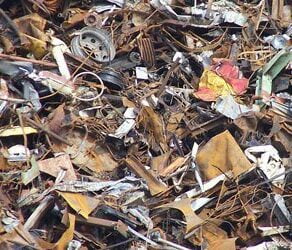
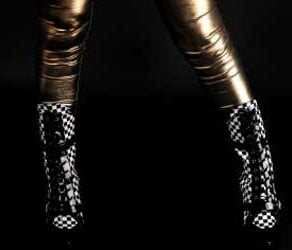
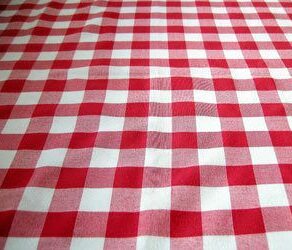
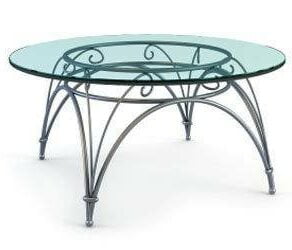
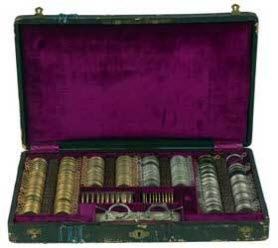


Thank you very much for this information. I will try this today.
Sorry, I tried both – vinegar and denture tablets, but nothing helped. My crystal vase is still cloudy. I need more ideas, please!
Many thanks in advance,
Aida
Aida,
Since your vase is crystal, if it is not getting clean with the methods listed, you may need to have it professionally polished. Other ideas: you can try using dish soap, or mask the film with a light coat of oil.
Source: How to Clean Stuff – How to Remove Limescale from a Humidifier/Vaporizer Heating Unit
Source: American Cut Glass Association – Sick Glass
I have tried everything you named, but my vase, or glass, still has that white trim where the water stood.
What can I do? Should I use some acid?
I even used the toilet cleaner, with no luck.
Please could you help.
Thank you!!!!
Gisela,
You can try using a stronger acid. Coca Cola is more acidic than vinegar and lemon juice is more acidic than Coke. There are a couple more ideas in the article How to Remove Lime Scale as well, such as using water softener, cream of tartar or baking soda. Another option is to use a commercial product for lime scale, such as CLR.
Source: Beverly Meyer On Diet and Health –
Dentist’s Warning On Smoothies And Juices: Popular Drinks More Acidic Than Vinegar
Source: About.com – pH of Common Chemicals
Source: The Cary Company – CLR PRO Industrial Products Frequently Asked Questions
Dear Aida,
I learned the hard way that if you put your crystal vase in the dishwasher or HOT water, it is forever clouded!!! Hope it wasn’t a cherished gift!
I have seen somewhere that vinegar will etch lead crystal i.e. Waterford.
I am trying 4 denture tabs and will do 8 if they dont work. I left the vase in vinegar & baking soda, but that didn’t work. Next I will try a paste of salt and vinegar or ammonia or Vaseline. I will try rice or eggshells also. It is a beautiful cut glass tall vase I rescued from a friend.
Anita you might want to try putting a hand full of ice and then some table salt in the vase and swishing them around in a circular motion. Years ago, when I was a waitress, the glass coffee pots would have burned coffee in the bottom and a hard water stain line half way up the pot (usually white). The ice and salt cleaned it every time.
There is always the possibility that the while film you are seeing is not caused by mineral deposits from hard water, but might in fact be a condition called “sick glass”. It looks very much the same, but in this case, the surface of the glass has gone through molecular changes that are irreversible. That said, I’m going to try a few of these thing on a Waterford decanter I just found at Salvation Army!
The white or cloudy rings on the inside of flower vases are often neither limescale nor etching (“sick glass” or dishwasher bloom) but a biofilm. This is a thin layer of protein-based material usually produced by the activity of bacteria, and it often arises from failing to refresh the water in which the flowers are stood sufficiently frequently, and allowing decomposition to start. These marks, when fresh, can often be removed by soaking the vase in biological laundry powder, the enzymes in which will attack the protein. However, they can be very difficult to remove if allowed to dry, or are “cooked” onto the surface by using very hot water or inappropriate cleaning materials. Scrubbing them with vinegar, salt, baking powder, descaling chemicals etc is likely to make them permanent.
The white or cloudy rings on the inside of flower vases are often neither limescale nor etching (“sick glass” or dishwasher bloom) but a biofilm. This is a thin layer of protein-based material usually produced by the activity of bacteria, and it often arises from failing to refresh the water in which the flowers are stood sufficiently frequently, and allowing decomposition to start. These marks, when fresh, can often be removed by soaking the vase in biological laundry powder, the enzymes in which will attack the protein. However, they can be very difficult to remove if allowed to dry, or are “cooked” onto the surface by using very hot water or inappropriate cleaning materials. Scrubbing them with vinegar, salt, baking powder, descaling chemicals, etc., is likely to make them permanent.
If all else fails, pitch the vase and get a new one!
I always soak my vases with ammonia water and then wash with Dawn dishwashing detergent.